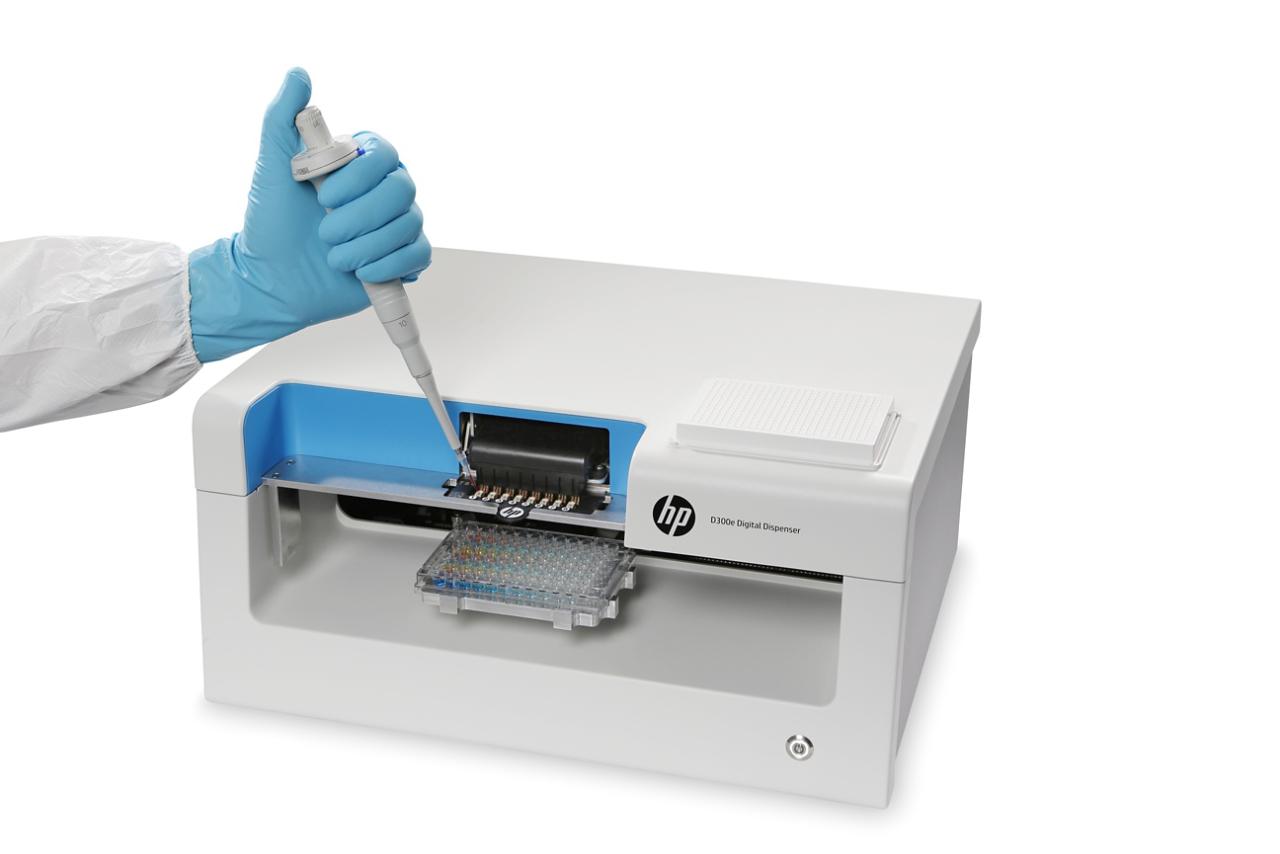HP has announced its participation in the Centers for Disease Control and Prevention (CDC) pilot program that aims to develop new antibiotics designed to fight antimicrobial-resistant bacteria.
According to the CDC, a U.S. healthcare organization, infectious diseases with resistant organisms caused by antibiotics are difficult to treat, requiring costly and sometimes toxic alternatives. With HP’s bioprinting technology, microbiologists are able to print antibiotics samples for testing directed at halting the spread of such bacteria.
“Bacteria continuously develop new ways to resist antibiotics—once a drug is approved for use, the countdown begins until resistance emerges,” said Jean Patel, PH.D. D (ABMM), Science Team Lead, Antibiotic Resistance Coordination and Strategy Unit at CDC.

The HP D300e Digital Dispenser BioPrinter
The ability of a microbe to resist the effects of medication, i.e., antimicrobial resistance, remains an international public health issue as it opens the door for a plethora of diseases to spread, states the CDC. Without proper testing, new drugs used to combat such bacteria can contribute to the presence of antimicrobial resistance.
Thus, with the use of an HP D300e Digital Dispenser BioPrinter researchers can properly analyze the behavior of antimicrobial bacteria for effective antibiotics. Similar to the set-up of a regular ink printer, the HP Bioprinter dispenses volumes from picoliters to microliters of small molecules for drug discovery, and research into microbiological structures(genomics and proteomics).
In an effort to develop new antibiotics, the CDC is also planning to deploy HP BioPrinters within its Antibiotic Resistance (AR) Lab Network across four regional areas in U.S. Additionally, California-based pharmaceutical company Gilead, is using the HP BioPrinter to develop tests for drugs used against the Ebola virus.
“To save lives and protect people, it is vital to make technology accessible to hospital labs nationwide. We hope this pilot will help ensure our newest drugs last longer and put gold-standard lab results in healthcare providers’ hands faster,” added Patel.
As of yet, there is no news on whether HP is developing a 3D bioprinter.
Combating diseases with 3D printing
Earlier this month, researchers from McMaster University in Ontario, presented a 3D printed solution for combating superbugs – a strain of bacteria immune to antibiotics. The Printed Fluorescence Imaging Box (PFI Box), assembled from six 3D printed walls, acts as an experimental chamber for bacteria.
LED lights within the box are used to excite the bacteria’s fluorescent proteins, then a Raspberry Pi processor records the data from this reaction to be analyzed for an appropriate and innovative drug response.
Prior to this, researchers from Northeastern University, inspired by the naturally repellent surface of cicada insect wings, began using Oxford Performance Materials’ (OPM) 3D printed PEKK plastic to develop anti-infection orthopedic devices.
For more of the latest 3D printing news subscribe to the 3D Printing Industry newsletter and follow us on Twitter, and Facebook.
Pursuing a career in additive manufacturing or looking for skilled individuals in the field? Search and post 3D Printing Jobs for opportunities and new talent across engineering, marketing, sales and more.
Featured image shows the HP D300e Digital Dispenser BioPrinter. Photo via HP.

